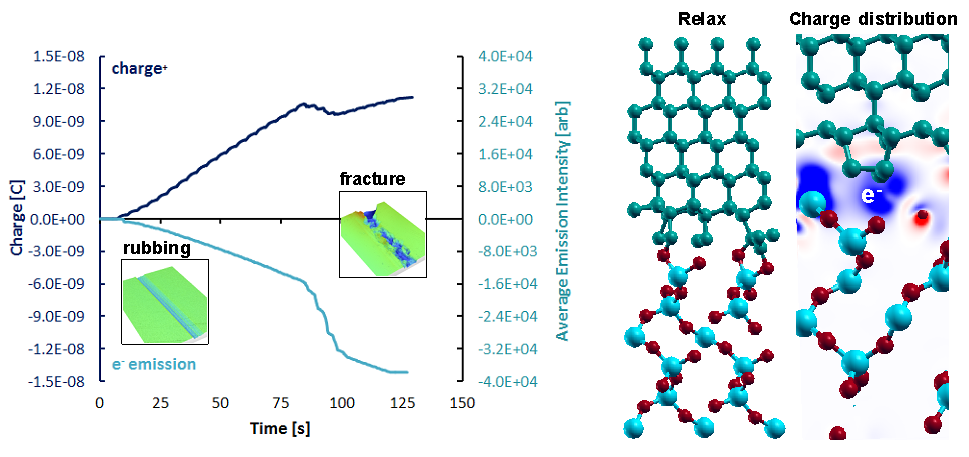The two phenomena are then described by means of density functional theory (DFT) - Quantum Espresso package. The electronic structure of the silica surface and its changes due to the formation and breaking of chemical bonds are described by the first-principle approach based on DFT.
RESULTS & DISCUSSION: Sliding tests where no fractures were observed on the surface, as proven by white light interferometry scans of the specimen after the tests (Figure 1a)), generates positive charge of the surface and low negative emission. The surface charge measurements and the simultaneously average of emission intensity plotted as a function of the time show a correlation between charging and emission. This comparison reveals that the positive charging of the surface corresponds to negative particles leaving the specimen. In tests when fractures were observed on the sliding surface, the comparison between surface charge and the average intensity of the emission, shown in Figure 1a), reveals a different trend. Here it can be noticed that, unlike the case of sliding without fracture, the surface charges negatively. This suggests that during fracture both negative charged and positive charged particles are emitted with the number of positive particles being higher compared to negative particles.
The theoretical analysis conducted to unravel the tribocharging mechanisms suggested by the experimental tests shows (Figure1b)) that at the interface between the diamond and alpha-quartz silica slab there is a transfer of charge due to the contact between the two surfaces. In particular, silicon atoms lose electrons in favour of carbons atoms, leaving the silica slab positively charged as expected. Additional dynamics analysis show that disruption mechanisms generated by the sliding between the two slabs cause breaking of bonds and removal of material influencing the variation of the charge of the surfaces.

Figure 1 a) Surface charging and average intensity emission over time during rubbing and fracture, b) Charge distribution at diamond-alpha quartz silica interface after relaxing.
REFERENCES: 1. Burgo, Langmuir, (2012), 2. Ciniero, Wear, (2017), 3. Zhao, J. Eng. Tribol., (2001), 4. Spikes, Tribology Letters (2004).